No tropical escape is complete without a frolic in the surf, but it’s beneath the waves that the real magic happens. There’s not a nature documentary in the world that can prepare you for witnessing the wonders of the marine world firsthand – no offence, Sir Attenborough.
Of course, floating on the open sea with a plastic breathing tube as your lifeline isn’t the most natural of endeavours, so to ensure you’re well-prepared for your first encounter with the underwater realm, we’ve gathered some practical tips for the snorkelling beginner.
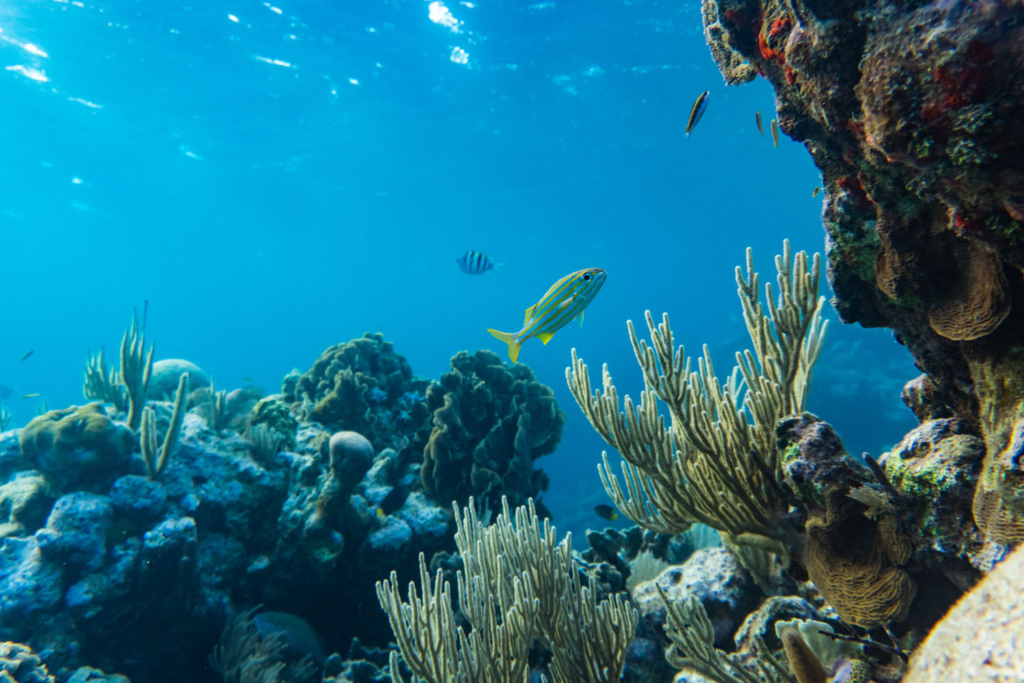
First, the bare necessities. You’ll need:
– A body of calm, clear water: Waves and currents are not your friend.
– Good swimming skills: Wearing a flotation device is highly advisable, but it’s no substitute for being able to swim at a basic level.
– High-quality snorkelling equipment: This is important, so more on this in a sec.
– A snorkelling buddy: It’s always safer and more fun to snorkel with a friend!
That’s it. Pretty simple, right? Well, don’t start flapping your fins just yet – there’s a bit more ground to cover before you dive in. You’ll need to…
Get The Right Gear
Equipment can make or break your snorkelling experience, so choose wisely. The mask and breathing apparatus will of course compose the most important aspects of your snorkelling rig, and here you have the choice between the classic combo of breathing tube (called, unsurprising, a ‘snorkel’) and diving mask (goggles that cover the eyes and nose), or one of those newfangled full-face snorkel masks. The latter are extremely easy to use and are ideal for the most casual of snorkellers – ie. those who are content to bob on the surface and gaze at the fishes – but if you’re keen to dive down for a closer look, the combination snorkel-and-mask set-up is more flexible and will better suit your needs.
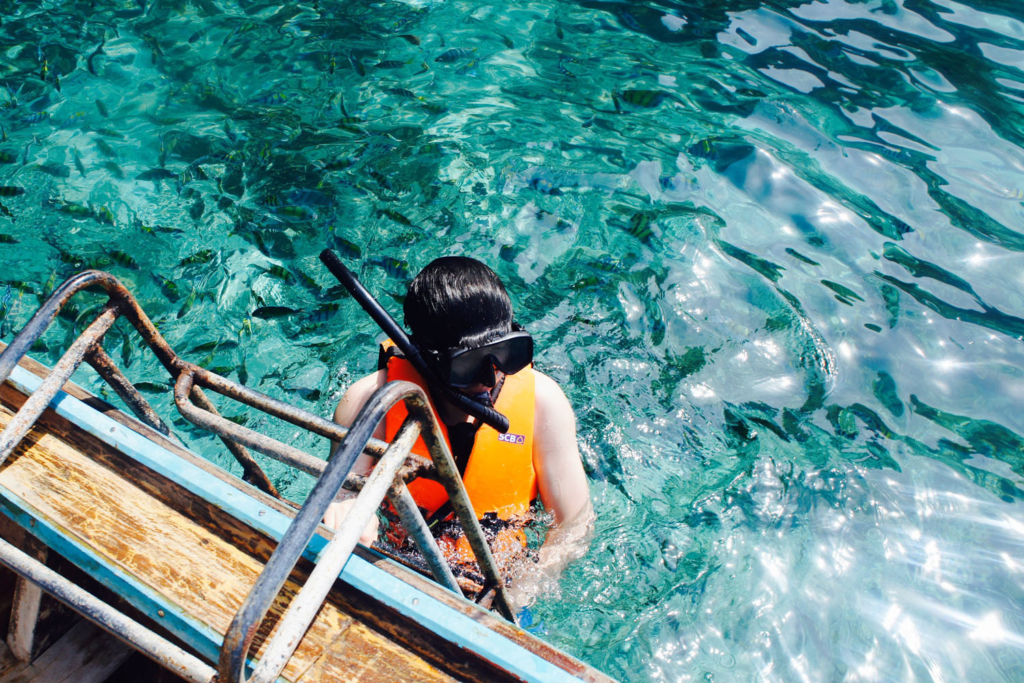
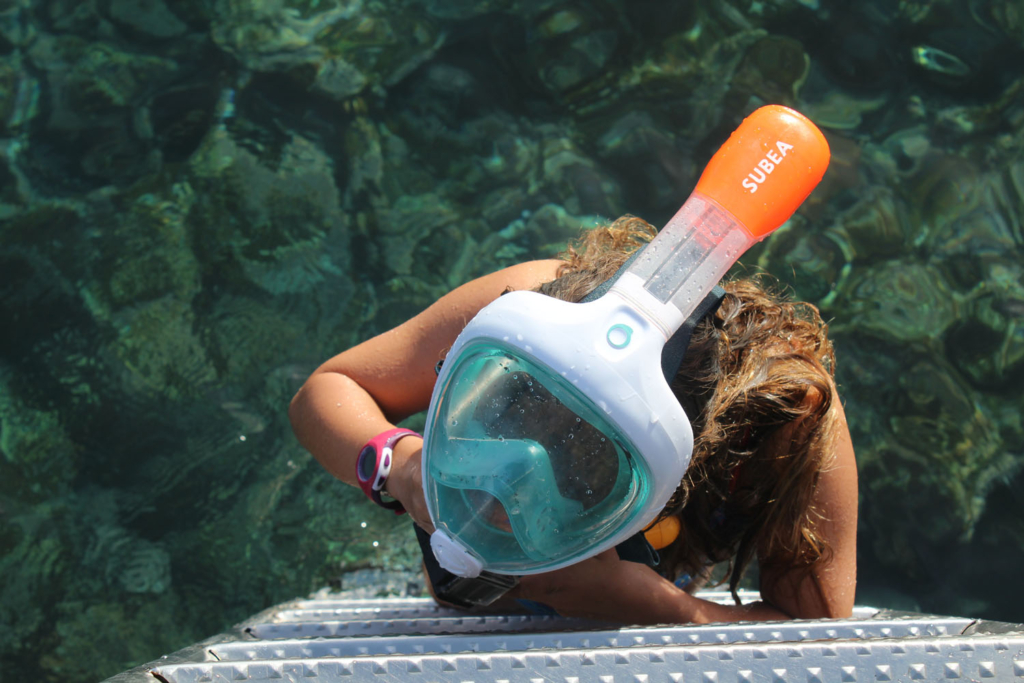
Whatever you decide, it’s paramount that the mask fits perfectly to your face to prevent water leaking in. Firstly, choose the right size for you – it’s useless to try and snorkel with a mask that was made for a much larger or smaller person. Be sure to wear your mask with the strap completely flat – no twists – and sitting snugly around the widest part of your head. Also make sure that no hair is in the way, preventing a tight seal. To check if a dive mask is properly fitted, press the mask to your face and take a small breath in through your nose. Release the mask; if it remains snug to your face, you’ve got the right fit.
And don’t forget your fins: awkward as they may feel at first, fins are indispensable for helping you conserve energy as you swim along, and thus extending your snorkelling pleasure. Beginners should go for full-foot fins rather than adjustable ones, and again, ensuring a good fit is key.
Take A Practice Swim
It’s safe to say that wearing snorkelling equipment and breathing through a mouthpiece isn’t the most natural thing, and it takes some getting used to for most of us. To avoid fumbling with your gear or even panicking on the open water – and of course to make the most of your snorkelling time – it’s a good idea to take your equipment for a practice run beforehand. Test it out in a swimming pool or a shallow beach area to familiarise yourself with your equipment and get the hang of proper breathing, as well as swimming with fins.
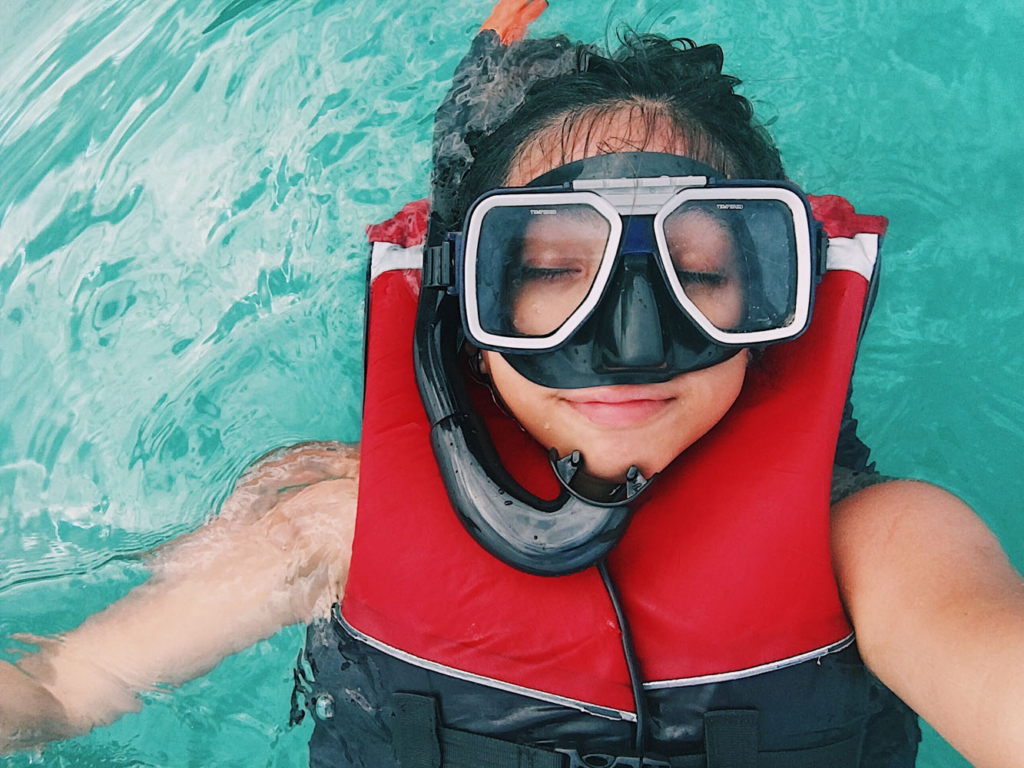
Know How To Clear Water From Your Snorkel And Mask
Trust us: a water-logged mask or a flooded snorkel can ruin the day quicker than a shark sighting. And though it’s inevitable that you’ll get a bit of water in either – say, when you dive down to investigate the reef up close, or you get tumbled by a rogue wave – luckily both problems are easily remedied.
Clearing your snorkel is as simple as blowing into it forcefully to push the water out of the top, and emptying your mask can be done when you surface. But what if you need to expel water from your mask while underwater? All you have to do is take a deep breath from your snorkel, and then, using your hand to press the top of your mask to your forehead, gently exhale through your nose. A little puff should be enough to push the water out through the bottom of your mask.
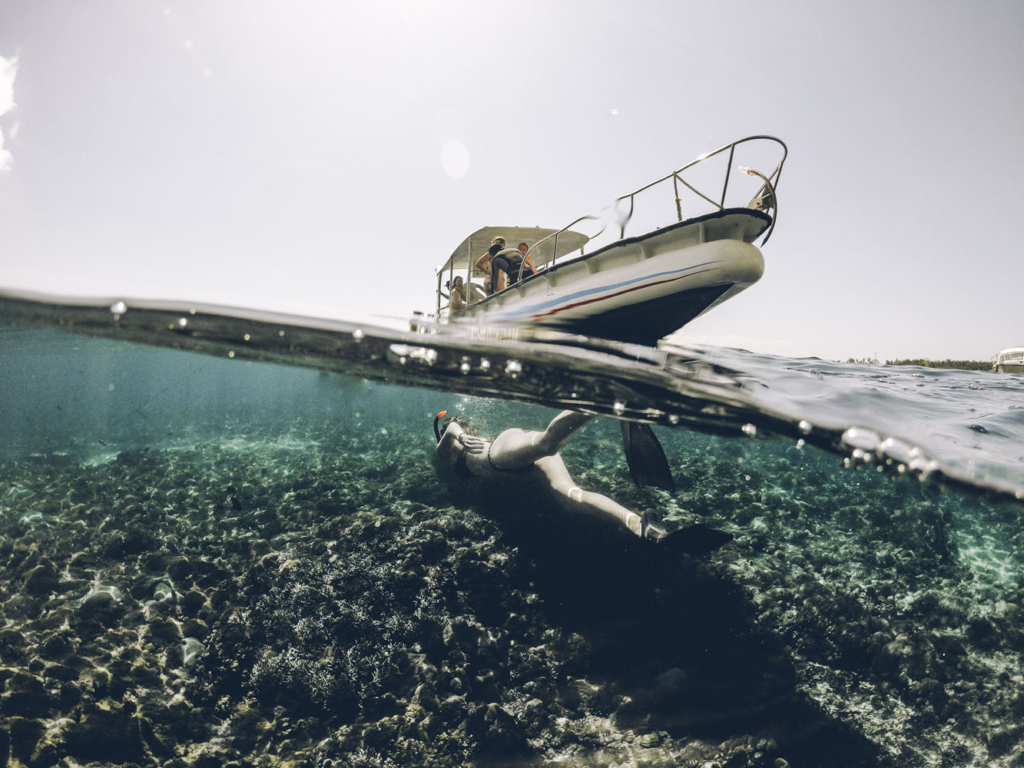
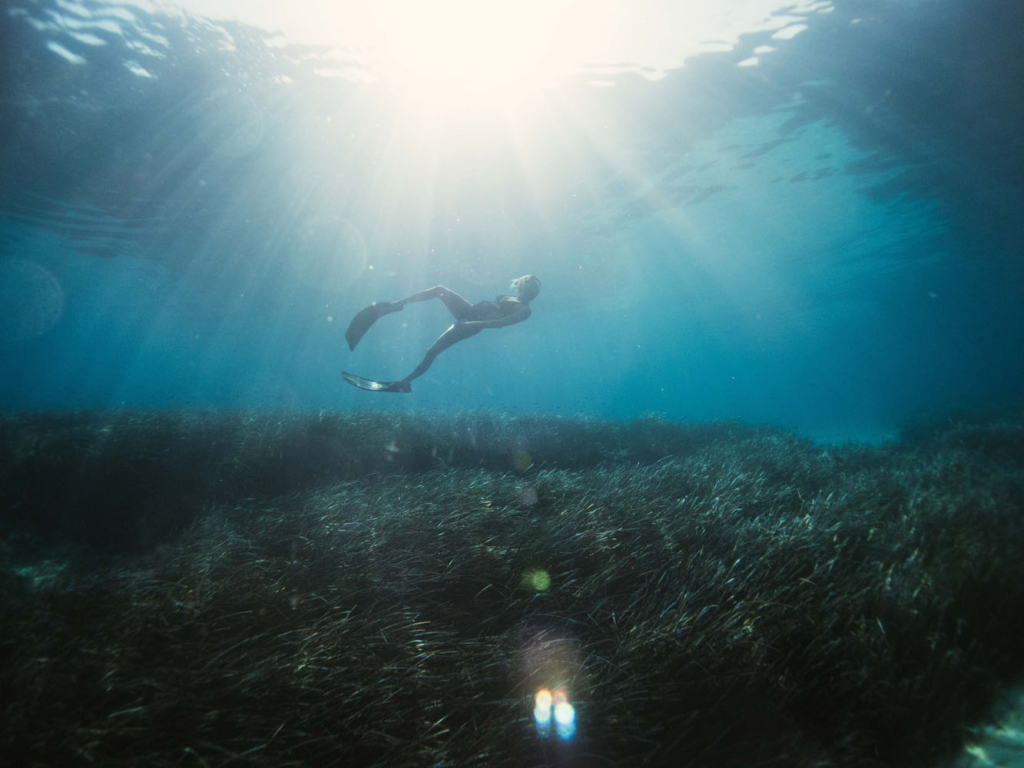
Oh, and be sure to prep your mask beforehand with a defogging agent: commercially available defogging solutions are a must for regular snorkellers, but diluted dish soap or baby shampoo (it’s tear-free!) are handy, cost-effective alternatives. And if you need a quick defog while out in the water, the good ol’ spit-and-rinse trick will work in a pinch.
Take It Easy
Some of us are dip-your-toe-in-the-water types, while others are the kind to jump in head first. Depending on the approach you prefer to take in snorkelling (and life in general), you may not want your first snorkel experience to be the boat-based, open-water kind. And that’s okay. Start off on a calm beach where you can gradually work your way up to snorkelling in greater depths, and easily return to shore when you’ve had enough.
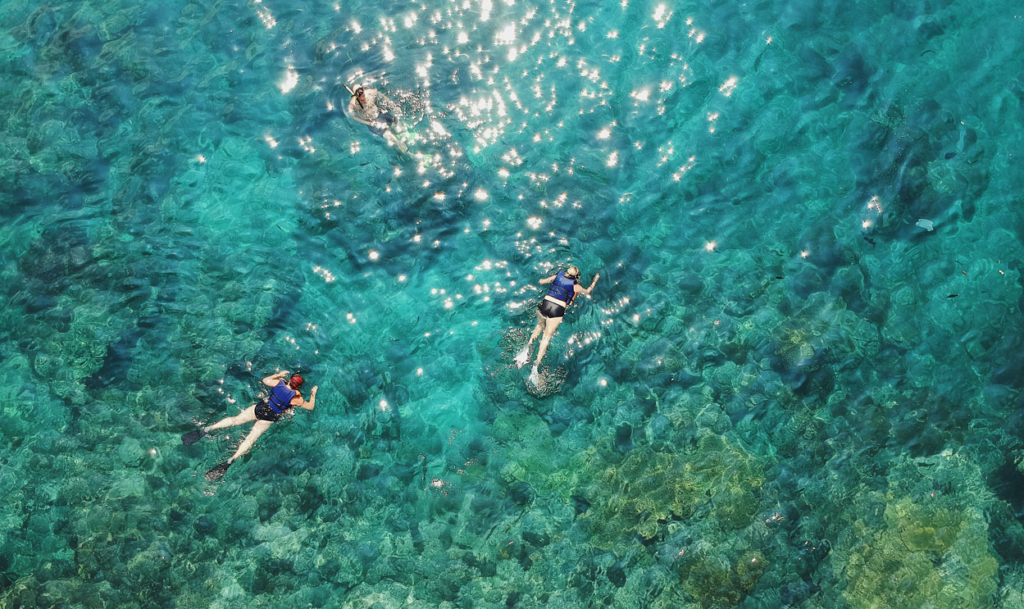
Whatever your depth, remember to go easy. We know, we know, it’s exciting – there’s so much to see! – but seriously, take a chill pill. Swimming vigorously with your arms will wear you out quickly, and splashing about will scare away the pretty fish. Relax your arms at your sides, kick your legs gently and allow your fins to propel you forward at a leisurely pace. This will help you breathe slower as well, which will prevent you from taking in a big gulp of seawater, should some splash into your snorkel. It will also aid you in maintaining buoyancy as you float effortlessly along.
Be Respectful
You wouldn’t bust down someone’s front door and start running around terrorising them, stealing their trinkets and knocking holes in their walls, would you? We sure hope not.
The same applies here: we’re visitors in the ocean, and we must be respectful of the residents. Whatever you do, don’t touch the coral reefs – these incredibly beautiful and vital animals are also highly fragile. Don’t feed the marine creatures or, heaven forbid, touch, harass or chase them – no matter how excited you are that you found Nemo. Also, don’t take any souvenirs, living or otherwise; leave the marine landscape as you found it. And do wear biodegradable sunscreen devoid of chemicals known to harm corals. Be kind to the reef, and the reef will be kind to you.
And finally…
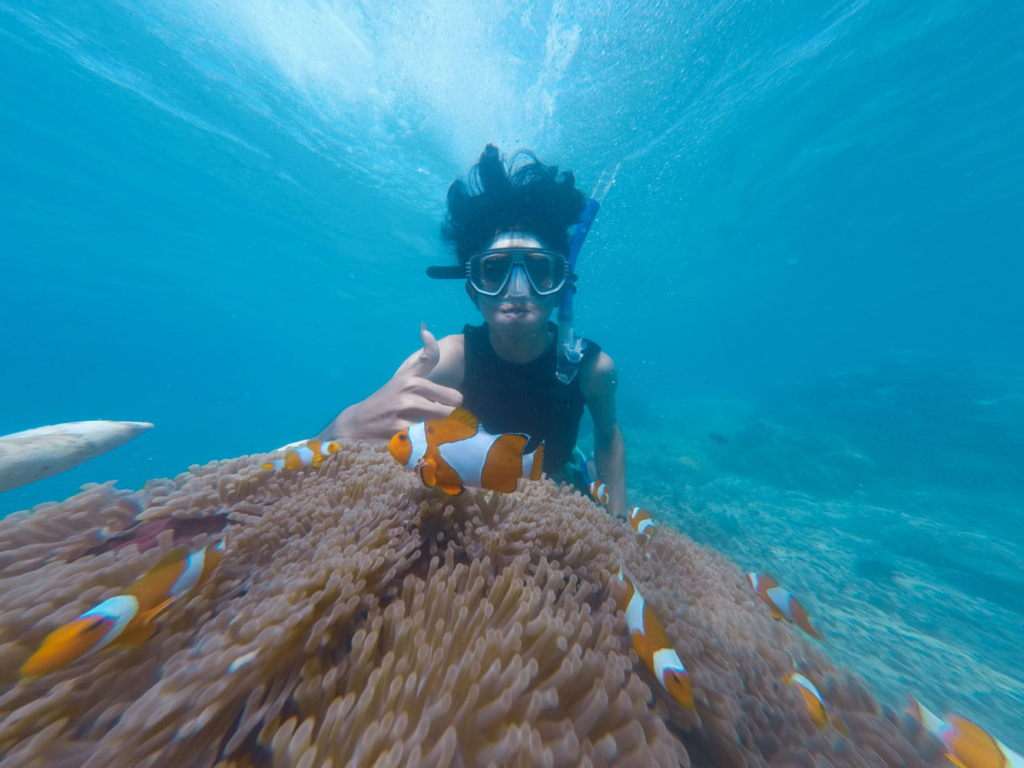
Have Fun!
It goes without saying, but relish the experience and appreciate this opportunity to glimpse the beauty and wonder of our underwater world. Carry a GoPro or waterproof camera if you must, however we recommend simply soaking in the sights and sounds of the sea without any distractions.
Now that you’re ready for your first snorkelling expedition, it’s time to go forth and make a splash – but only a small one. You don’t want to frighten off the fish!

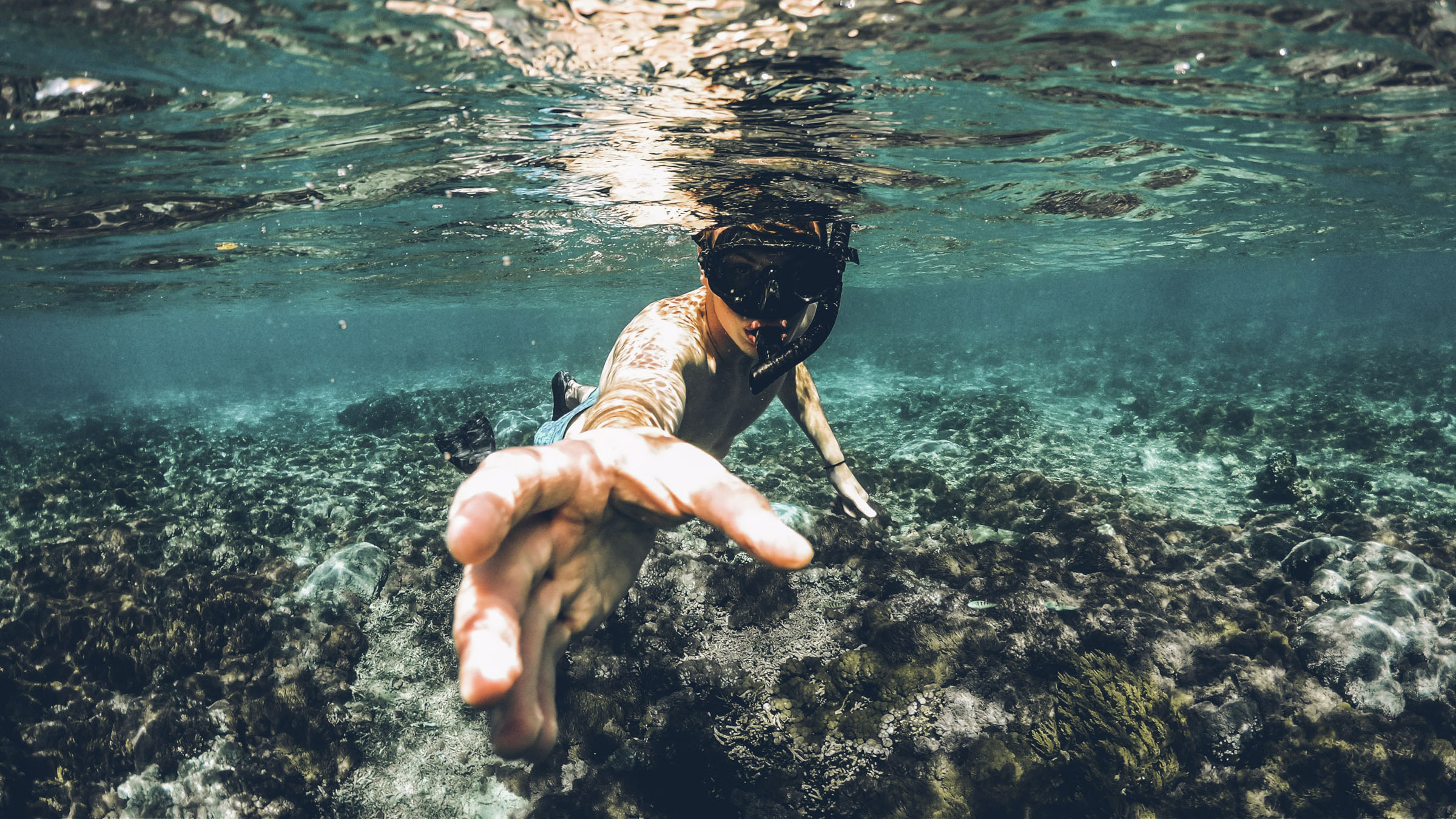

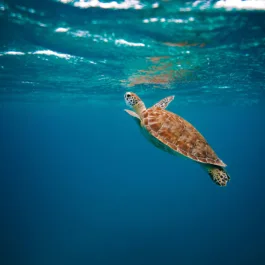


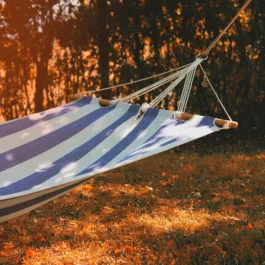







Sorry, the comment form is closed at this time.